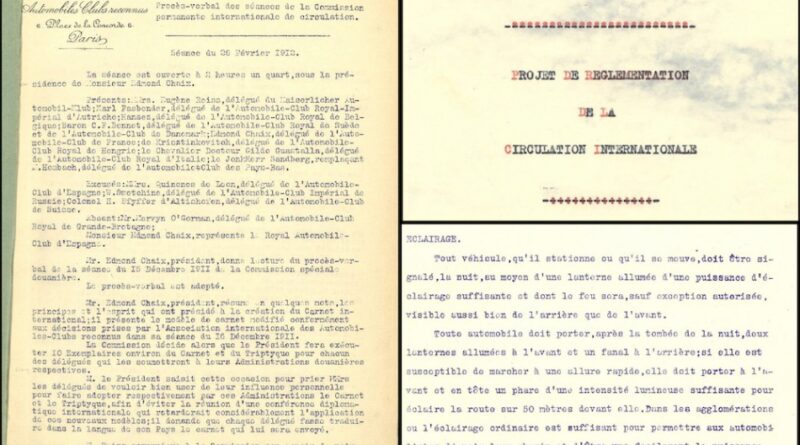DEEP DIVE INTO FIA’S HISTORY: MAKING CAR HEADLIGHTS OBLIGATORY
As part of the FIA archives digitisation and e-library project, the FIA team scanned documents from the beginning of the 20th century which contributed to making car headlights obligatory for safety reasons and defined their technical specifications.

Minutes from FIA Assembly meetings held between 1908 and 1912, letters to partner organisations and dedicated studies were among the archived documents.
At first, car headlights aimed to illuminate the road in order to avoid crashes with horses, kettle or humans on rural roads and cars were equipped with fueled lamps. The invention of electric lights happened much later.
We can read in the Procès-verbal de la séance de la Commission Permanente Internationale de Circulation from 26 February 1912: “As soon as it gets dark, all cycles must be fitted at the front with an aluminised lantern.”
“Any vehicle, whether parked or moving, must be signaled at night by means of a lighted lantern with sufficient lighting power, the driver of which will be visible, …. as well as the back to the wind. Every motor vehicle must carry, after dark, two lighted lanterns at the front and a beacon at the rear; if she is likely to move at a fast pace, she must wear the front lights.”
Taking into account the speed of vehicles in those times, car lamps had to be able to illuminate at least 50 meters in the dark, according to a feasibility study attached to the final decision made in 1912.

